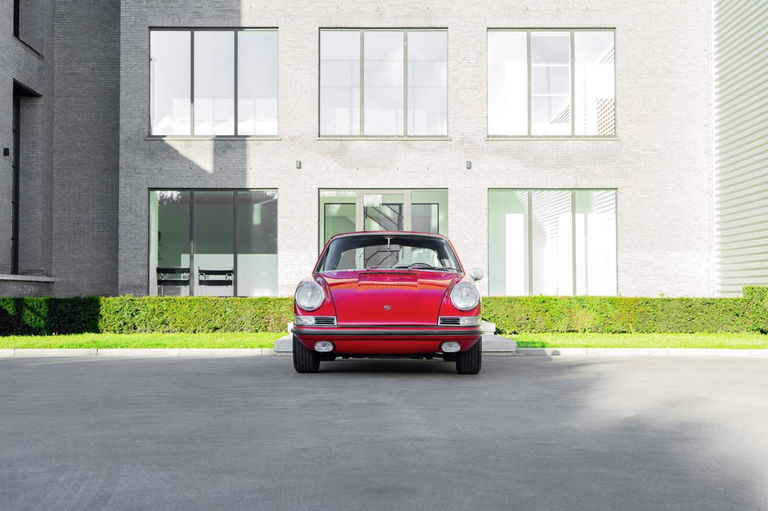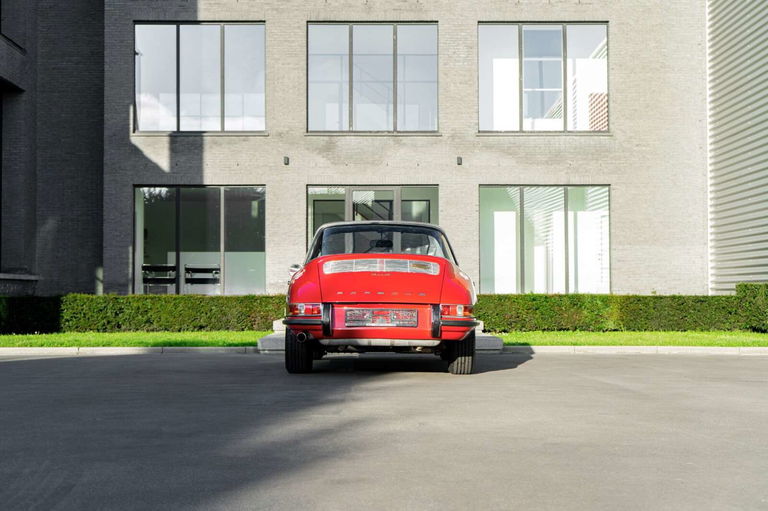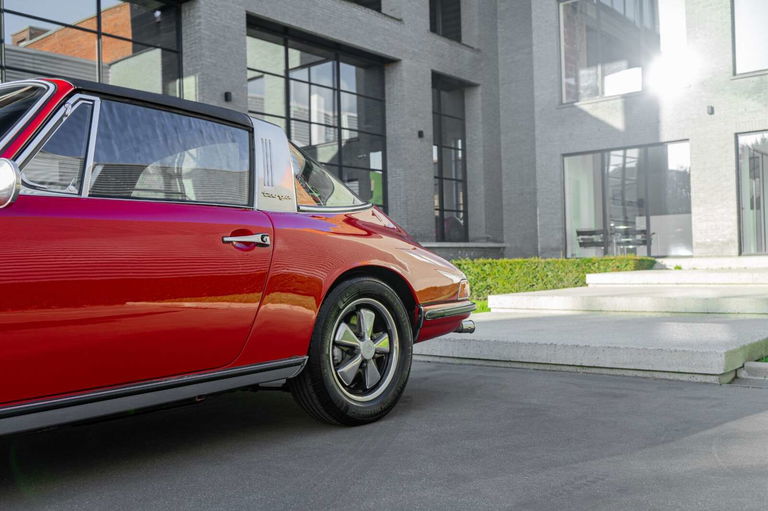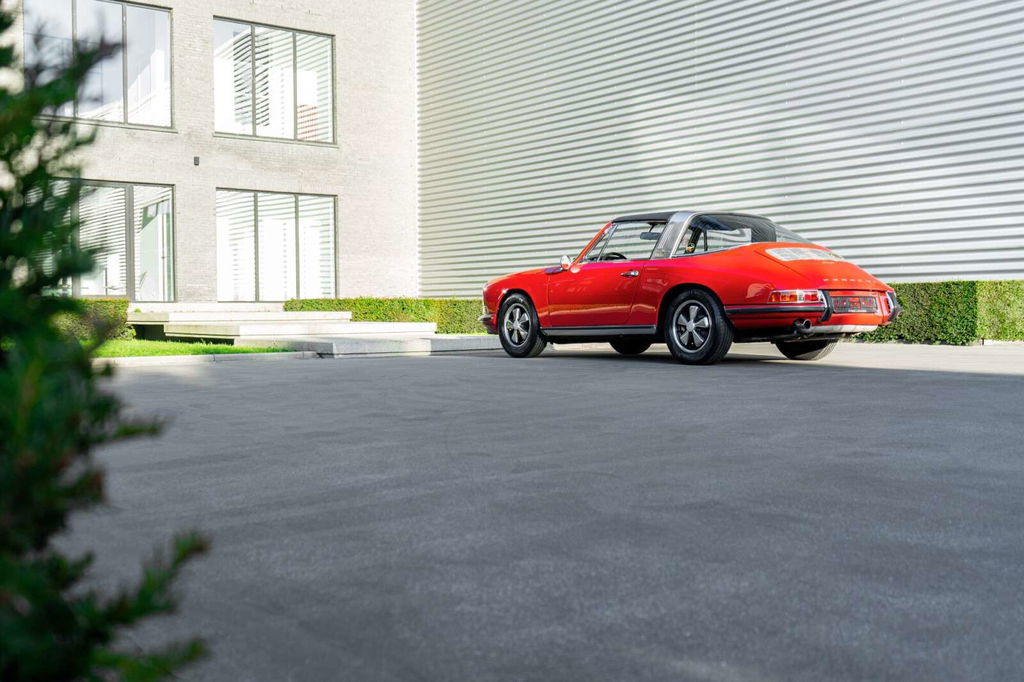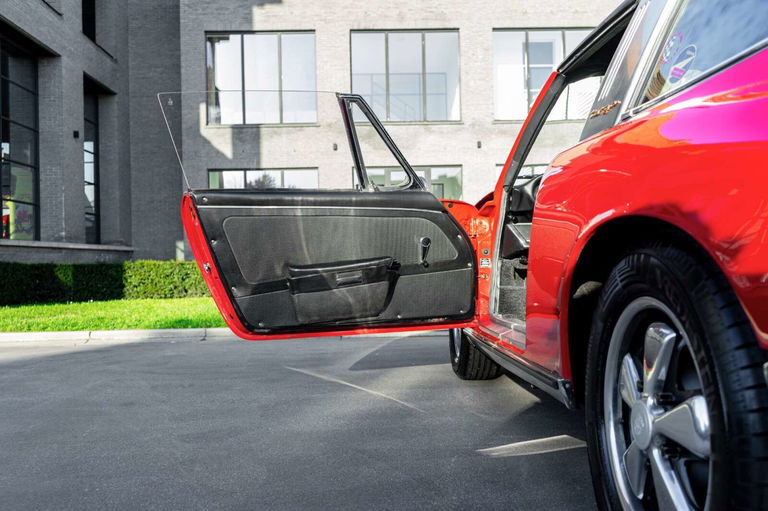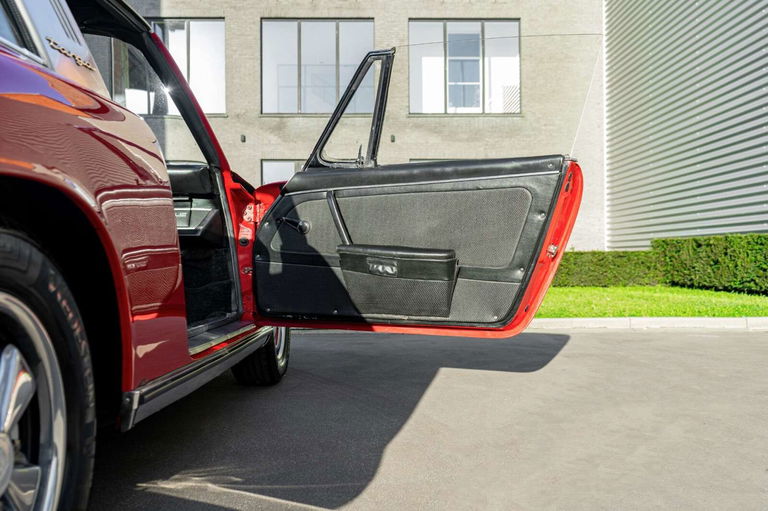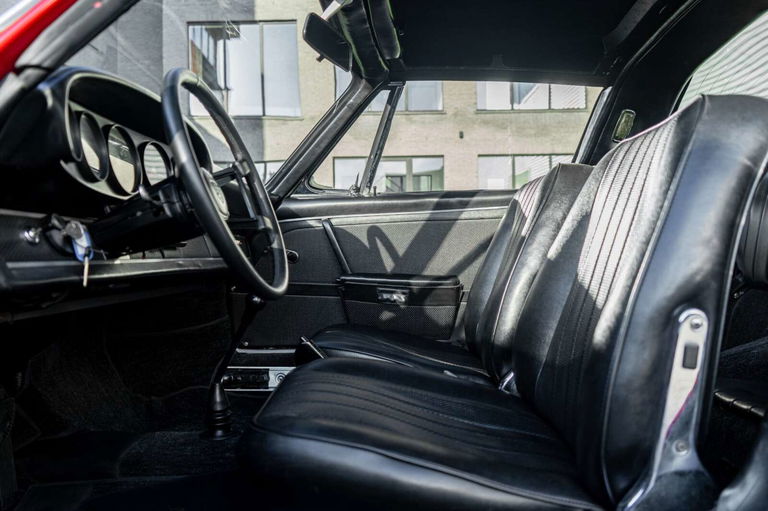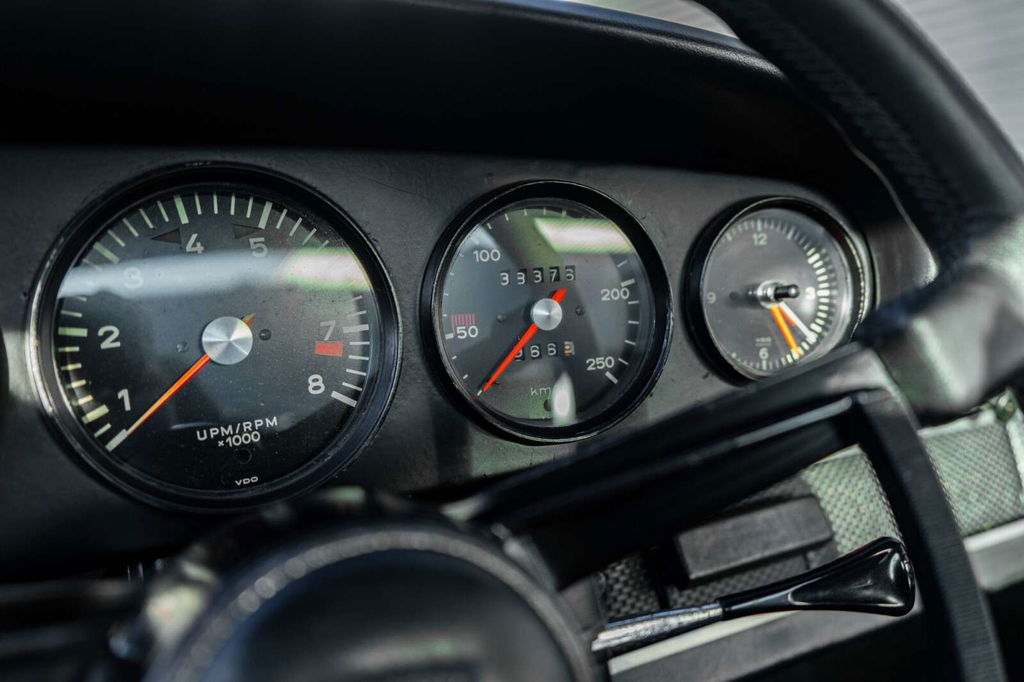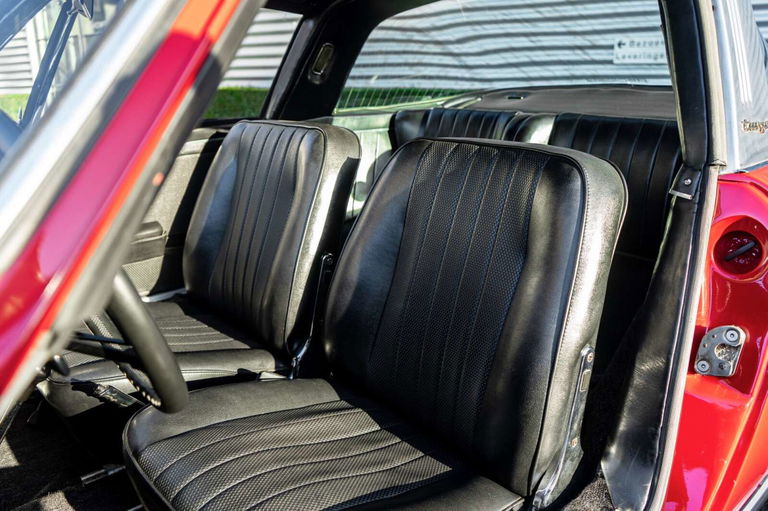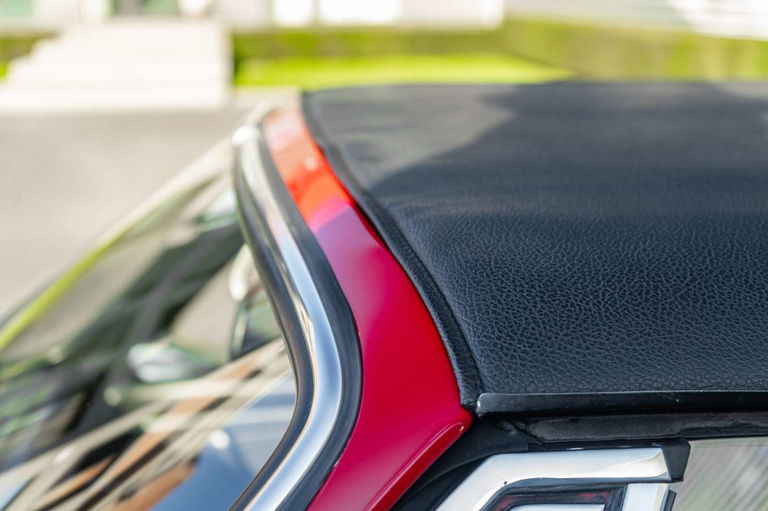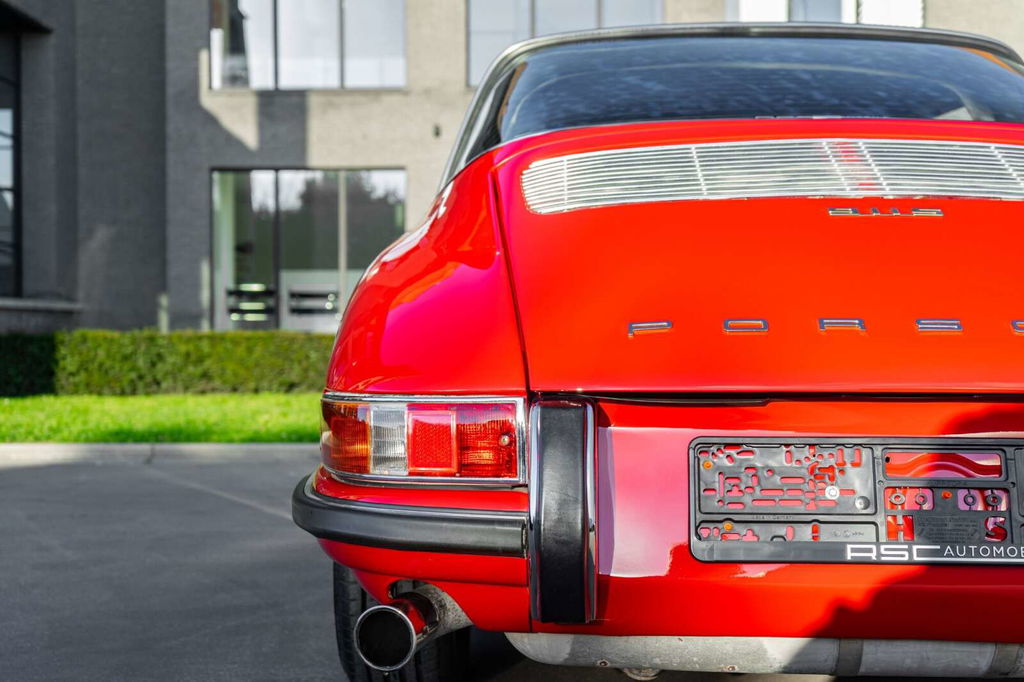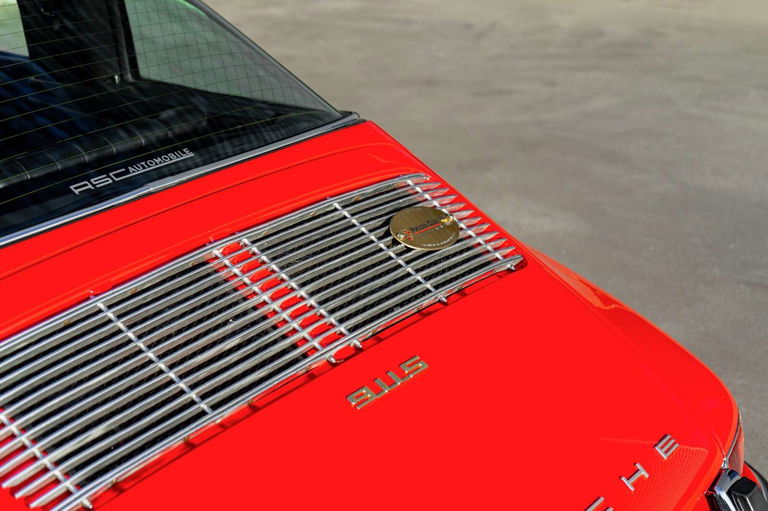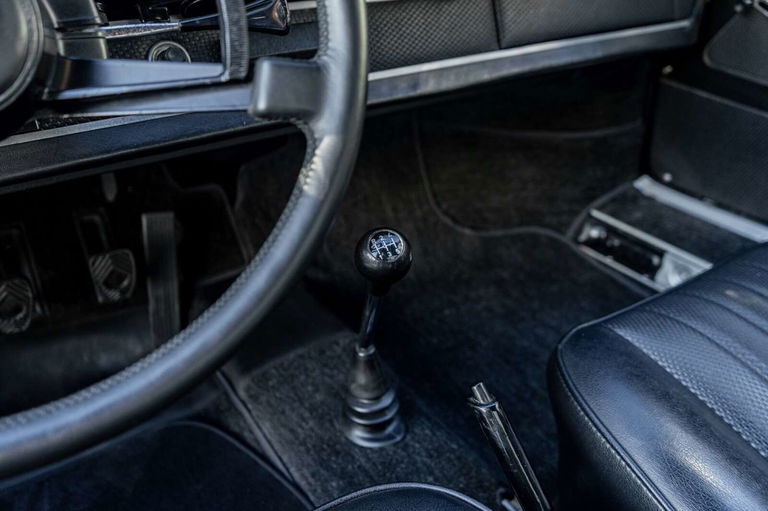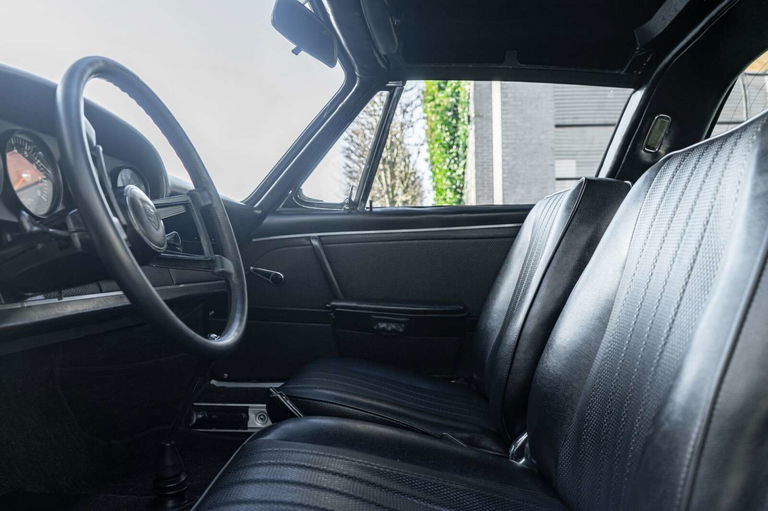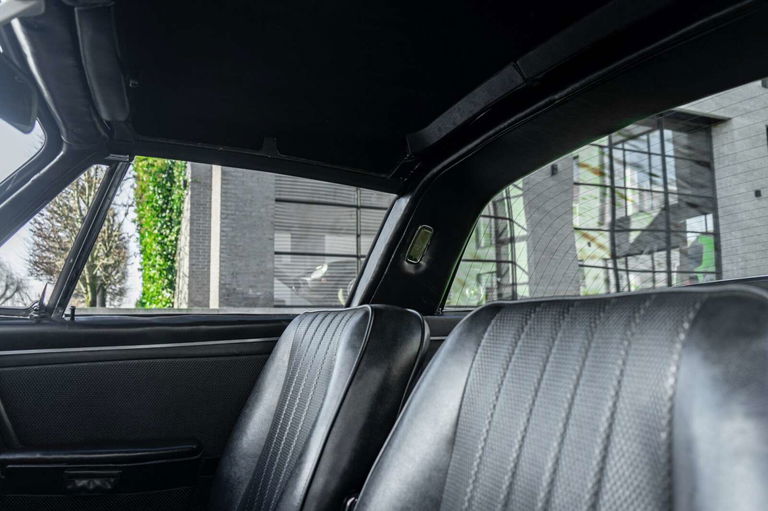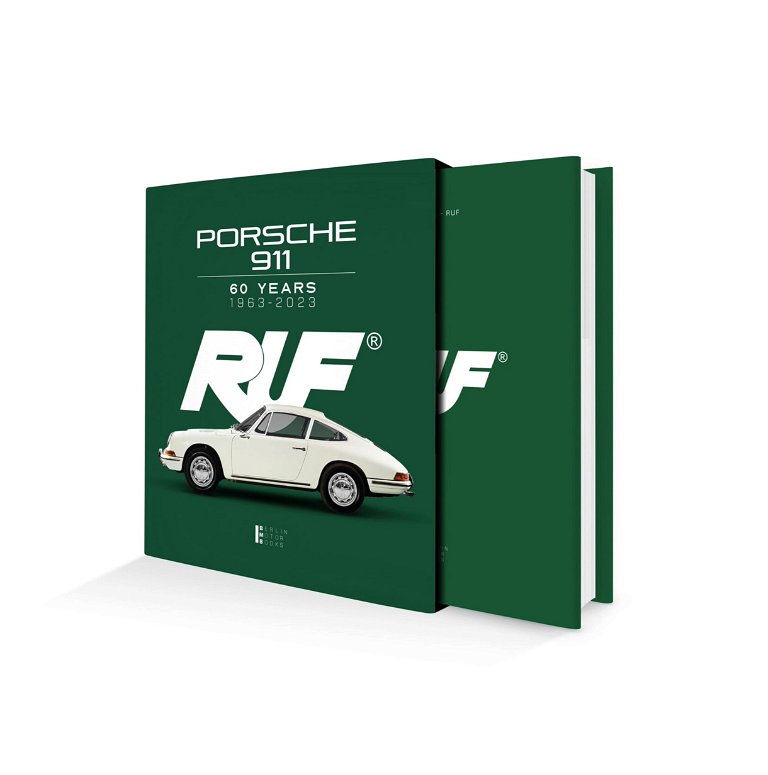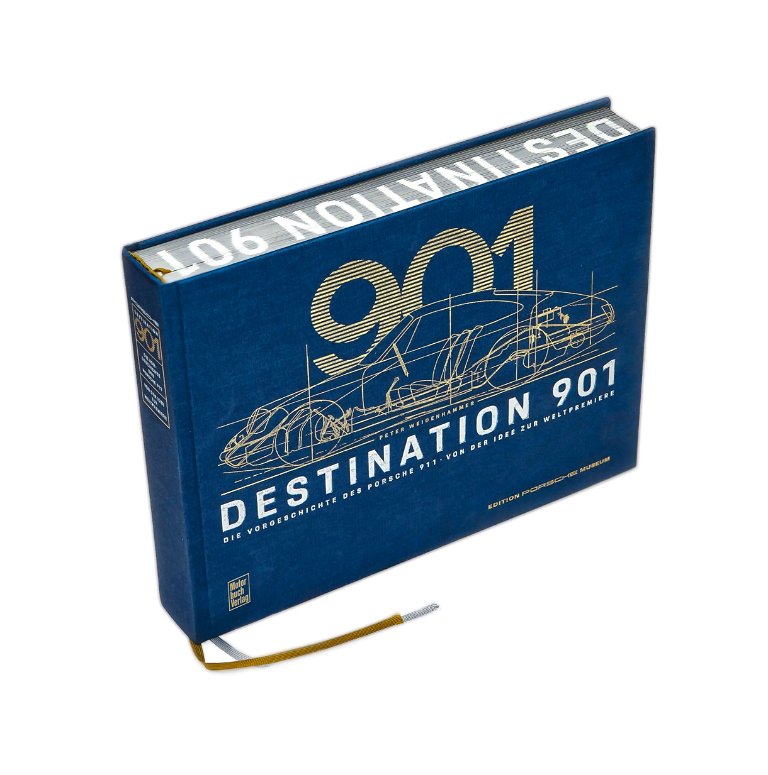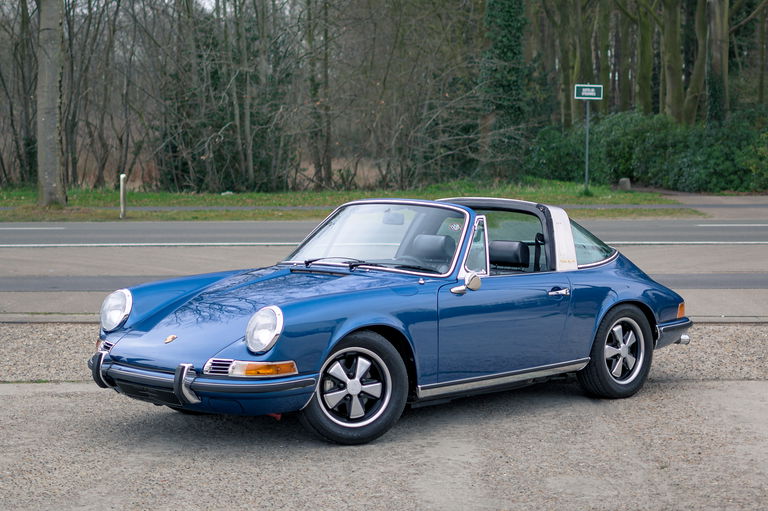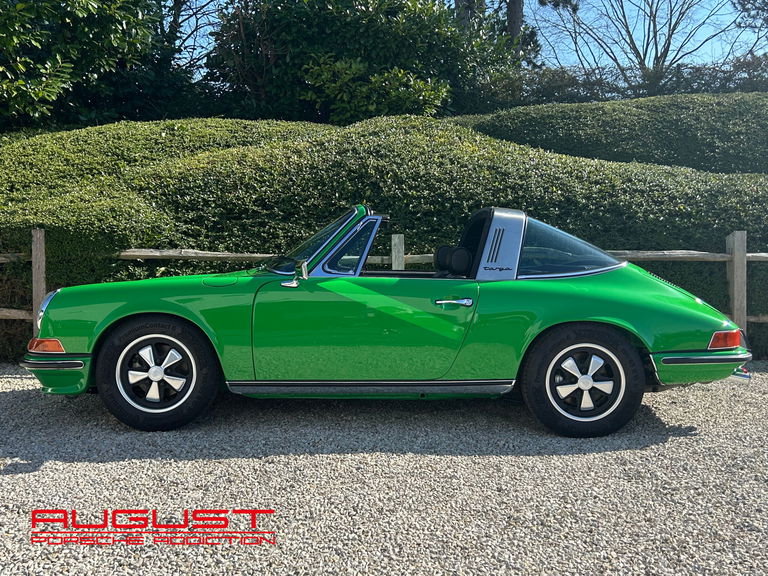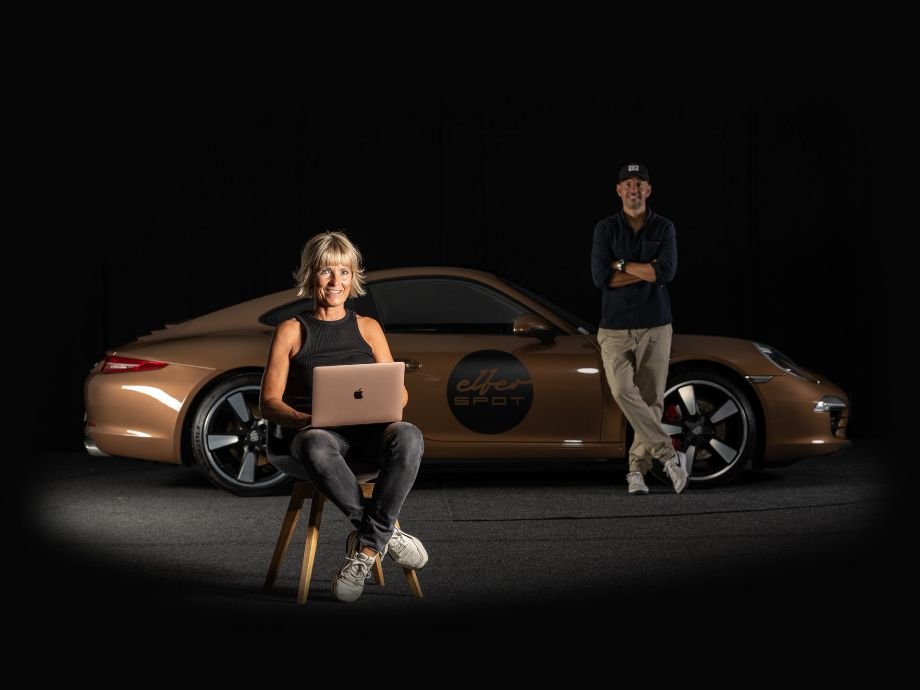This is a European 911 S Targa and there were only 442 S Targa`s built that year. Since Porsche only imported the 911L to America, and no S this is the rarest of the 911S. The Porsche Italy COA confirms its matching number engine and color combination.
In the care of its previous private owner this beautiful 911S Targa underwent a well-documented rotisserie restoration by experts. The restoration was completed in Italy and is well documented by photos— detailing the particulars of the work executed. The current owner bought the car in 2013 and enjoyed it sparingly; adding only 1.500km on the odo since!
Needless to say, even though the older restoration, this Porsche is still in lovely condition throughout. The interior is nicely trimmed in the correct leatherette and basket weave dash stripping, the unique-to-1968 door cards are installed. Outside, the paint shows well and has a great gloss. Chrome work is still nice and shiny. Only a small remark can be made on the “next years” targa bar that is installed. All mechanics were restored to as new condition so this Targa is an amazing sports car no doubt.
From the last year of the short wheelbase 911s, these fun and exciting early 911s are among the purest examples of Porsche’s most successful model. Offered with the Porsche Italy issued Certificate of Authenticity, matching spare wheel, jack and tool kit, this rare numbers-matching Targa is ready for open-air enjoyment on challenging roads and active participation in local and club shows.
CAR-PASS >>
THE PORSCHE 911
Introduced at the 1963 Frankfurt Auto Show, the 911 proved to be the most historically significant Porsche model of all, becoming the mainstay of the Zuffenhausen production for more than 50 years, albeit constantly modified and uprated. With a broadly similar layout to the 356, the 911 had a steel platform chassis with springing by torsion bars, MacPherson front struts, rear trailing arms, and a flat-6 air-cooled engine and five-speed transmission first seen on the 904. Like the final 356C, the new 911 utilized disc brakes at all corners. Larger, more comfortable and quicker in every respect, the 911 proved a more than adequate replacement for the 356 and steadily evolved into the legendary supercar we know and love today.
The first of countless upgrades to Porsche’s perennial 911 came in 1966 with the introduction of the 911S, which featured a better-equipped interior and a heavily revised engine producing 160bhp. By this time around half of all 911s produced were being exported to the USA, where increasingly stringent regulation demanded that changes be made to the original design, the most significant being the adoption of dual-circuit brakes. It took time for Porsche’s engineers to get the newly introduced ‘S’ engine to meet emissions targets, so as an interim measure the 911L was introduced featuring the 911S’s superior equipment level but retaining the original 130bhp engine, pending the arrival of the de-toxed US-specification 911S for 1969. The 911L was dropped at the same time, its place as Porsche’s middle-of-the-range offering being taken by the 911E.
Around the same time, Porsche added an open-topped variant to the 911 model range for 1967 featuring a stainless steel-clad roll bar, removable roof panel and a detachable plastic rear window (a fixed glass window wasn’t made available until the following year as an option). Commemorating Porsche’s successive wins at the famous Sicilian road race, the new model was termed “Targa”, a term coined by other manufacturers since to describe this body configuration. The new 911 Targa was as close as Porsche came to ‘wind in the hair’ 911 motoring until the introduction of a full Cabriolet in the early 1980s.



